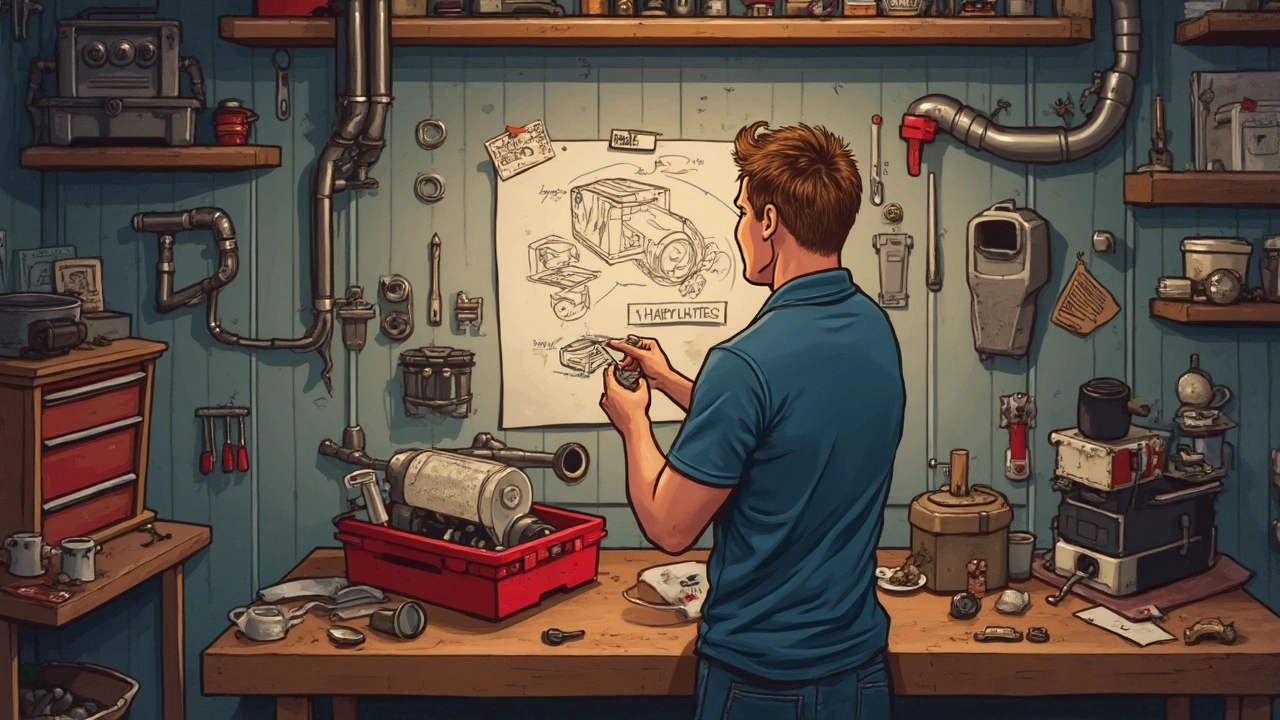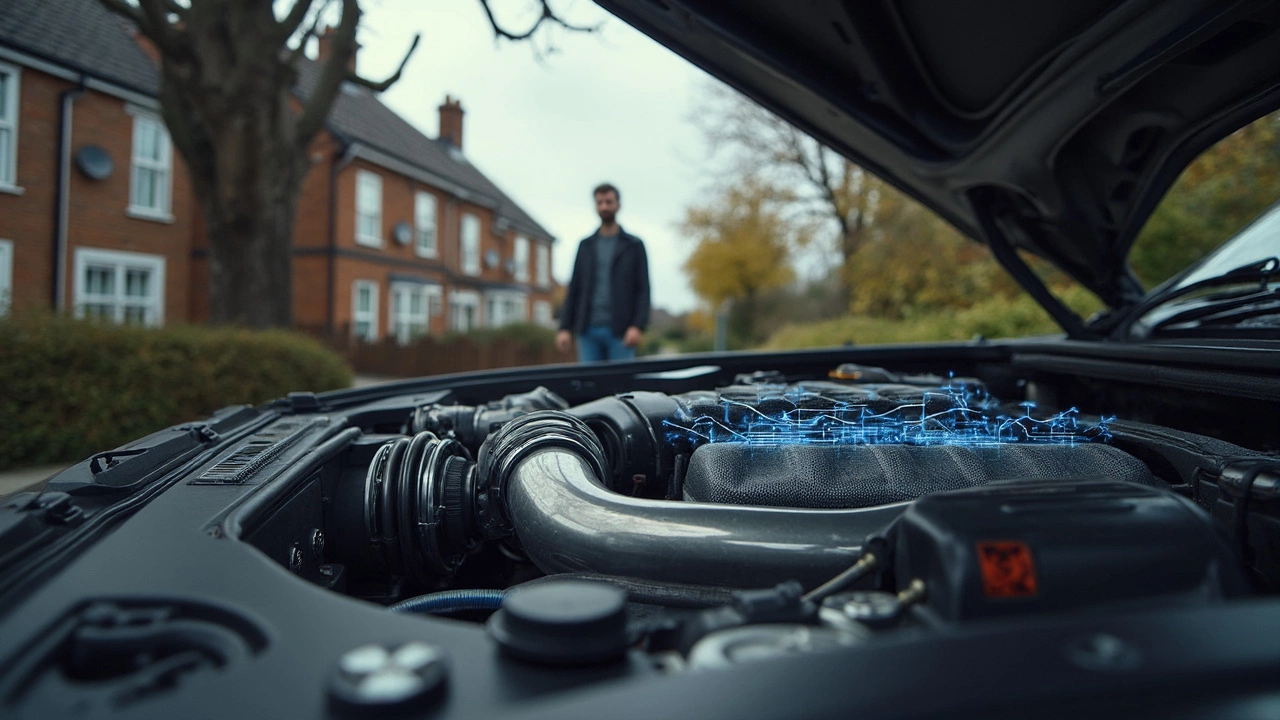Thinking about slapping on a cold air intake for extra horsepower? You’re definitely not alone—this upgrade is everywhere, from parking lot car meets to online forums. But does it really do what the internet promises, or are you just paying for a cool-looking tube under your hood?
Let’s clear the air: a cold air intake is supposed to help your engine breathe better by drawing cooler, denser air from outside the engine bay. Cooler air packs in more oxygen, and in theory, more oxygen means more power when mixed with fuel. Sounds simple enough, right? But the real question is, how much difference does it actually make once you hit the gas?
Before dropping your hard-earned cash, it helps to understand what happens under the hood—and if those HP numbers are just wishful thinking. Stick around, because there are some surprising facts that’ll probably make you rethink how you look at intake mods and your whole exhaust setup.
- What Does a Cold Air Intake Do?
- How (and If) It Adds Horsepower
- Real-World Gains: What to Expect
- DIY or Pay for Install?
- Pairing with Exhaust Systems: Smart Moves
What Does a Cold Air Intake Do?
A cold air intake swaps out your stock air filter box and intake tube for a system designed to grab cooler air from outside the engine bay. It’s all about feeding your car’s engine with chillier, denser air, because colder air means more oxygen for combustion. More oxygen usually equals more punch with every press of the gas pedal.
The factory setup pulls air that’s already warmed up by the engine. Stock intakes focus on quiet operation and easy maintenance, not maximum performance. A cold air intake changes that by relocating the air filter outside the hottest spots, often near a wheel well or behind the bumper, far from engine heat.
Here’s what usually changes when you bolt on a cold air intake:
- The air filter gets bigger and less restrictive, which allows more air to move in more easily.
- The intake tubing smooths out the airflow and takes a straighter path to the engine, cutting down turbulence.
- Most systems use heat shields or sealed boxes to separate the filter from engine heat.
Brands like K&N and AEM love to advertise potential HP boosts from these upgrades. According to their test numbers, a cold air intake can add anywhere from 5 to 20 horsepower on some cars, but it depends on your engine, the model, and how restricted your stock system was. Here’s a rough idea, based on dyno tests from several brands:
| Vehicle | Stock HP | HP Gain (Typical) |
|---|---|---|
| Honda Civic 1.8L | 140 | +7 HP |
| Ford Mustang 5.0L | 450 | +15 HP |
| Chevy Silverado 5.3L | 355 | +10 HP |
The most important thing to remember: installing a cold air intake won’t magically turn your sedan into a race car, but it definitely helps your engine breathe easier—especially when paired with other mods. The real change comes in how your car feels and sounds. Expect a deeper growl and a bit more pep under heavy throttle.
How (and If) It Adds Horsepower
Here’s what actually happens: a cold air intake system replaces your factory air box and filter with a setup that pulls in air from a cooler spot, usually away from all the hot stuff under your hood. The air filter is bigger and less restrictive, and the pipe is often smoother with fewer bends. This setup helps your engine breathe easier—kind of like swapping out a stuffy mask for a clear airway.
Colder air is denser, so it packs in more oxygen per gulp. More oxygen lets your engine burn more fuel, and that combo is what’s supposed to boost your horsepower. But here’s the thing: the real-life numbers aren’t as wild as the marketing claims. On a regular, non-tuned car, you might see gains of 5 to 15 horsepower on a dyno. That’s not a night-and-day difference. If you’re driving something older with a super restrictive stock intake, you might notice a bit more "oomph." But on most newer rides, especially those with turbochargers, the factory setup is actually pretty efficient already.
There’s a flip side, too. If your new intake pulls in hot engine air by accident, you won’t get any gains. More heat means less oxygen, so you might actually lose power. And if the system’s not sealed well or if installation is sloppy, your check engine light could make an early appearance. Proper fit and heat shielding matter way more than people think.
In short, it does work—but not to the crazy levels you might see thrown around online. It’s most effective as one piece of a bigger puzzle, especially paired with other upgrades and maybe a tune to adjust your car’s computer.

Real-World Gains: What to Expect
Everybody wants hard numbers before spending money, so let's break it down: the actual horsepower increase you’ll see from a cold air intake depends on your car, your engine, and whether you’ve done any other mods. Most stock vehicles gain somewhere between 5 and 15 HP. That’s not a night-and-day difference—you probably won’t feel it in your daily commute, but it’s measurable on a dyno and helps unlock more power if you add other upgrades later.
Here’s the thing: buying the cheapest filter-and-tube combo on eBay won’t get you big results. Quality intakes that are designed for your specific car make a bigger impact because their geometry, filter size, and heat shielding actually work.
Check out this table for actual dyno results reported by some popular cold air intake brands for everyday cars with no other major mods:
| Vehicle | Cold Air Intake Brand | Stock HP | Gain (HP) |
|---|---|---|---|
| 2016 Ford Mustang GT | K&N 63 Series | 435 HP | +11 HP |
| 2017 Honda Civic 1.5T | Injen SP Series | 174 HP | +8 HP |
| 2019 Toyota Tacoma V6 | AEM Brute Force | 278 HP | +12 HP |
If you're driving an older car with a 4-cylinder engine and an intake design that's already pretty open, expect to see the lower end of the range. Turbocharged engines or big V8s tend to get the most benefit, especially if you’re stacking other upgrades like exhaust or a tune.
No matter what you drive, make sure to reset your car’s ECU after the install so it can recognize the new airflow. On some newer models, you’ll get the best numbers with a custom tune—that’s where you’ll really see that intake pay off. If you already upgraded your exhaust or plan to, gains can stack up, but you’ll still max out under 20 HP for most street cars.
Bottom line? Most cold air intakes won’t make your ride a rocket, but they do add a bit more power, a more aggressive sound, and often better throttle response. And if you’re planning future mods, it’s a solid first step.
DIY or Pay for Install?
So, you want to bolt on a cold air intake and score that HP bump. The tricky part? Deciding if you're ready to yank out tools yourself or trust it to a shop. Here’s the bottom line—you don’t need a degree in mechanics to do this install, but it's not quite Lego-easy either. Most kits land you somewhere between 30 minutes and 2 hours for the full job depending on your ride.
If you fancy going the DIY route, most cold air intake kits come with everything you'll need: new tubing, clamps, brackets, and an air filter. Basic hand tools cover 90% of installs—think screwdrivers, socket wrenches, and maybe some pliers. A few YouTube videos can help you dodge common snags. No code scanning, complicated sensors, or deep engine digging required for most newer models. One catch: you sometimes have to wrestle a stubborn factory airbox or get creative with tight engine bays.
Here's a quick run-down:
- Unplug the battery (don’t skip—some sensors reset with no power, saving headaches)
- Remove stock airbox and tubing
- Install brackets and cold air intake tubing
- Attach filter, tighten clamps
- Double check all fittings and wires >
If you’d rather not mess up your daily driver, a pro install runs $50 to $150 in most places. Some shops throw in a quick ECU reset or airflow sensor check for peace of mind. That said, shops do get pricy in big cities and you still want to ask if the price covers every little gasket and screw.
Wondering how much time or money you'll spend? Here’s a snapshot comparing both approaches:
| Install Method | Typical Time | Typical Cost |
|---|---|---|
| DIY | 30-120 min | $0 (just your time) |
| Shop | 1-2 hours (schedule dependent) | $50-$150 |
The most important thing? Make sure you pick a kit that actually fits your vehicle and watch install videos for your exact model. A bad fit means no gains, and can even mess up your cold air intake system or throw annoying engine codes. If your current warranty covers only stock parts, double-check with your dealer before swapping out anything—some are pickier than others.

Pairing with Exhaust Systems: Smart Moves
If you just bolt on a cold air intake and call it a day, you’re probably leaving horsepower on the table. The real gains usually show up when you combine intake mods with a proper exhaust upgrade. Here’s why: your engine needs to breathe in air efficiently, sure—but it also has to get rid of exhaust gases just as fast. If your exhaust is all choked up, that fancy intake isn’t living up to its potential.
Let’s take the classic combo: cold air intake up front, performance exhaust (like a cat-back or axle-back system) at the back. This setup helps your engine suck in more oxygen and blow out more exhaust. Everything works smoother, so your engine can make more power without straining.
Check out these typical HP increase numbers for common combos:
| Modification | Typical HP Gain |
|---|---|
| Cold Air Intake Only | +5 to 12 HP |
| Performance Exhaust Only | +5 to 15 HP |
| Both (Intake & Exhaust) | +12 to 25 HP total |
The numbers above aren’t just marketing talk. Dyno tests—real measurements, not guesses—show that pairing mods gives you more power than either alone. Of course, not every car is the same. A little four-cylinder might see modest results, while a V8 could pick up even more, especially if you add high-flow headers or a performance tune.
- If you’re thinking about stacking mods, start with the intake, then do the exhaust. That way, you’re not doing any steps twice.
- Don’t forget: bigger pipes aren’t always better. Match the exhaust size to your engine; too large and you might lose low-end torque.
- Always check local emissions laws. Some setups are illegal or will make inspection a headache.
Want a little pro tip? If you upgrade both intake and exhaust, a simple ECU tune can unlock the most power. The computer in your car needs to know what’s changed, so it can adjust fuel and timing. This is where you squeeze every bit out of your cold air intake and exhaust combo without damaging your motor.

